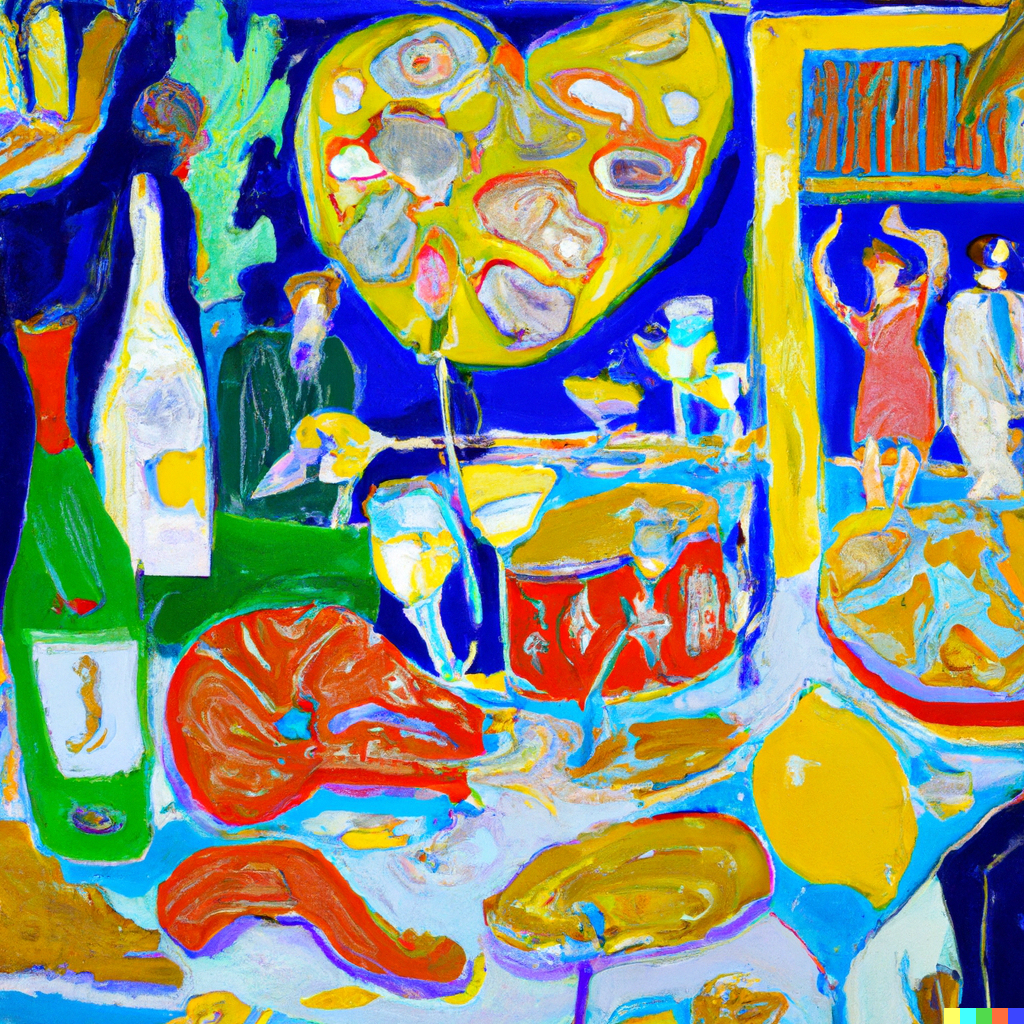
Boozy drinks, vibrant soundtracks, and unexpected flavor combinations—New York’s post-pandemic restaurants simply hit different. Refinement has seemingly been replaced with unadulterated fun. Whether it be Nolita’s Thai Diner with its spicy massaman curry-covered Thai Disco Fries or Greenpoint’s Wenwen with 4XL shared cocktails, there’s this feeling that restauranteurs are launching their apocalypse dining experiences. The restaurants that would exist if the world were truly about to go up in flames.
Dining out in New York appears to be at a high. Reservations and waits are ultra prevalent, and despite the fact that the city has been reopened for roughly two years, it feels like we’re all making up for the lost time. Restaurants have catered to this collective energy by introducing indulgent delights, celebrating the pieces of New York’s martini-drinking-beef-gorging-oyster-slurping past, all while creating a clubhouse-like environment within their walls—or even within their street enclosures.
Department of Culture is a North-Central Nigerian tasting menu hosted by Ayo Balogun in Bed-Stuy, Brooklyn. Ayo is a notable figure in the community. Standing tall, dressed smart and stylish, he is often seen outside of his coffee shop, The Council Cafe, seemingly always engaged in a conversation. Known for hosting popups, including summertime weekend Suya (smoked meat from Nigeria), he’s successfully brought a lot of energy and love to the neighborhood that I call home. Department of Culture, however, takes it deeper.

Inspired by his family and his upbringing in 1980s Nigeria, Department of Culture is an unspectacular dining room with photos of Balogun’s family, an open kitchen, and one large table that sits 16 people. You pay in advance for your 4-course meal and it’s BYOB, giving it this feeling that you’re truly not at a restaurant anymore. It feels like a home. As you sit at this communal table, indulging in dishes that remain mostly unfamiliar, you inevitably engage with those around you.
Shannon and I were positioned next to a nice couple—she was from New Zealand, he was from Northern Italy, and they too lived in Bed-Stuy. After a nice meal in which Ayo would explain the dishes, the inspiration for his restaurant, and serve as the host of a party, we continued chatting with our new friends and they invited us over to their apartment where we had some drinks on their rooftop.
Ayo unlocked something. The grand dinner party that had gone missing. That longing for connection and spontaneity was understood and developed—not dissimilar to the well-documented 1920s escapades of Hemmingway and Fitzgerald that spawned out of a world war.
That’s the thing, it’s not simply about indulgence and gluttony. The pandemic brought the world new brands and ideas. Before the feel-good restaurants were fully realized, we saw the rise of feel-good brands. Brands that weren’t simply built on healthy or sustainable, but brands that celebrated heritage in a way that hadn’t been done before, brands that tapped into childhood nostalgia, and brands that simply made something fun to eat.
We all got a taste of the end of the world, and in turn, we all got a chance to start over and create and enjoy what we’d want to go down creating or enjoying. Do we need more silver linings for something as awful as a pandemic? I suppose not. But I’m not sure we can remind ourselves enough to go fulfill and live our apocalypse dreams.
